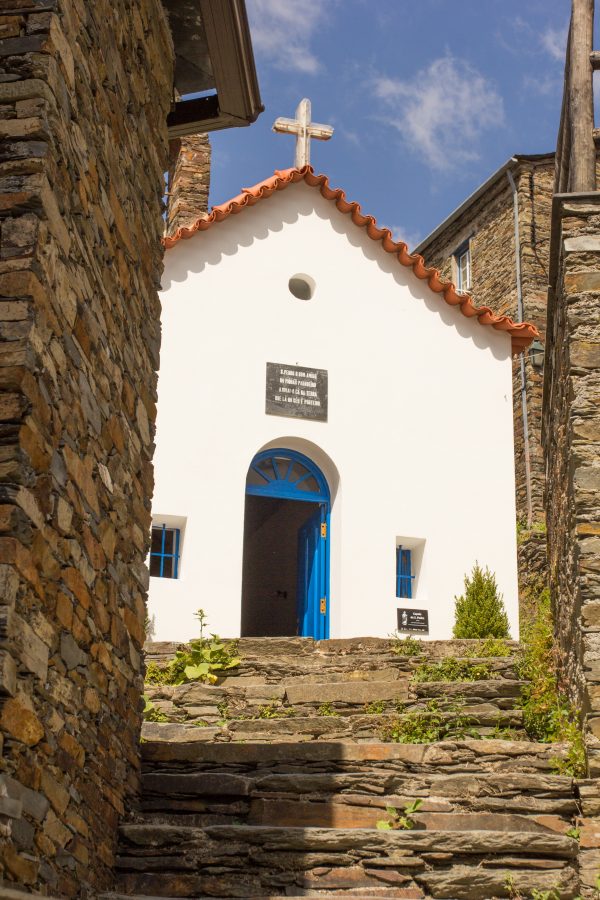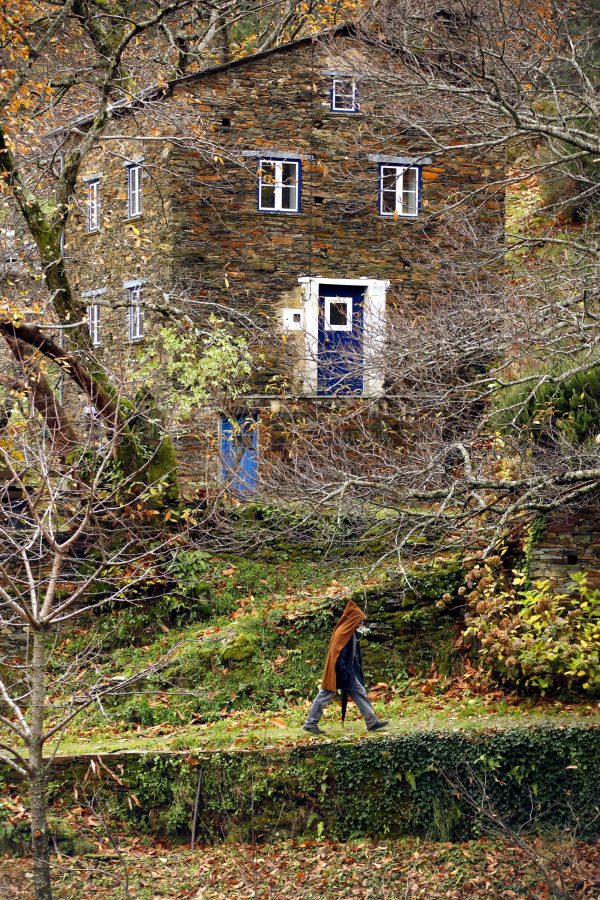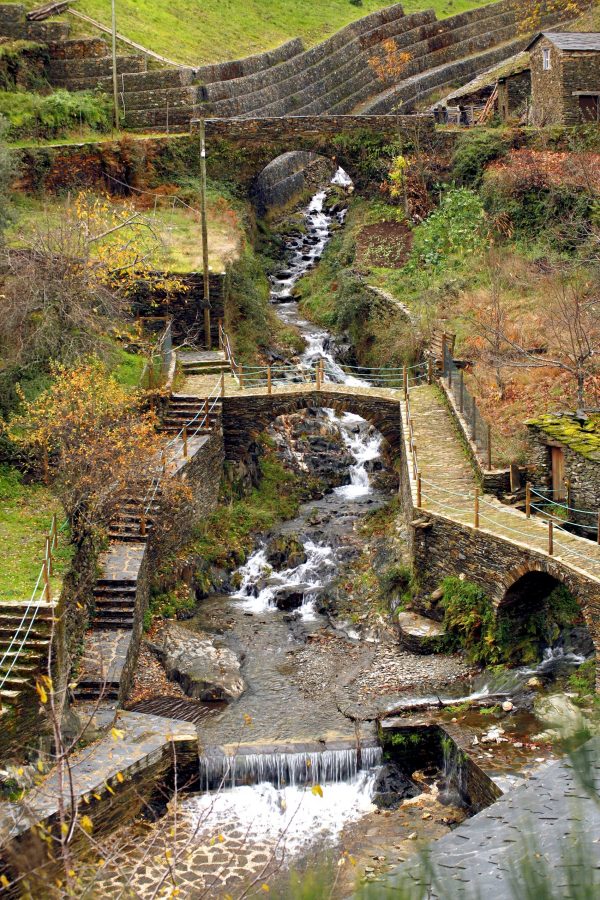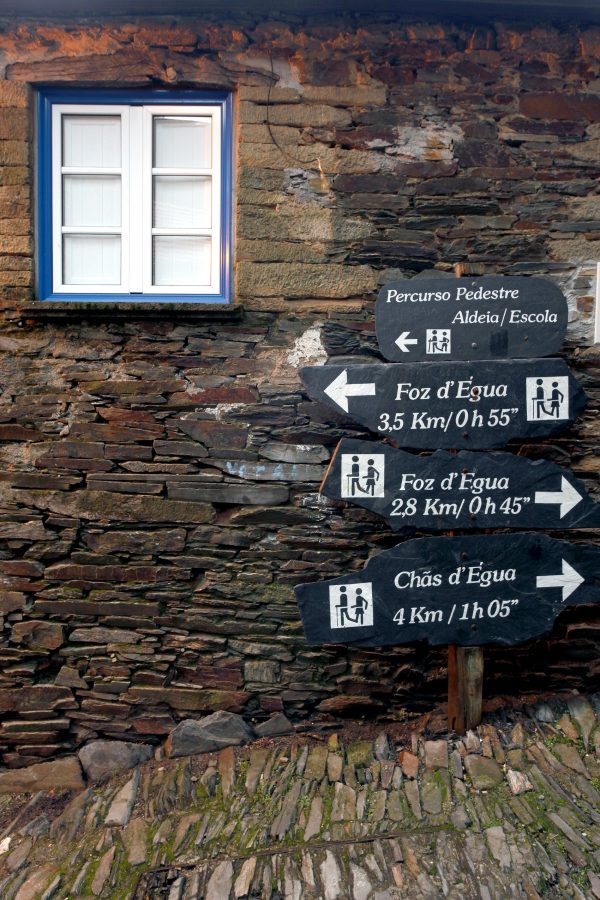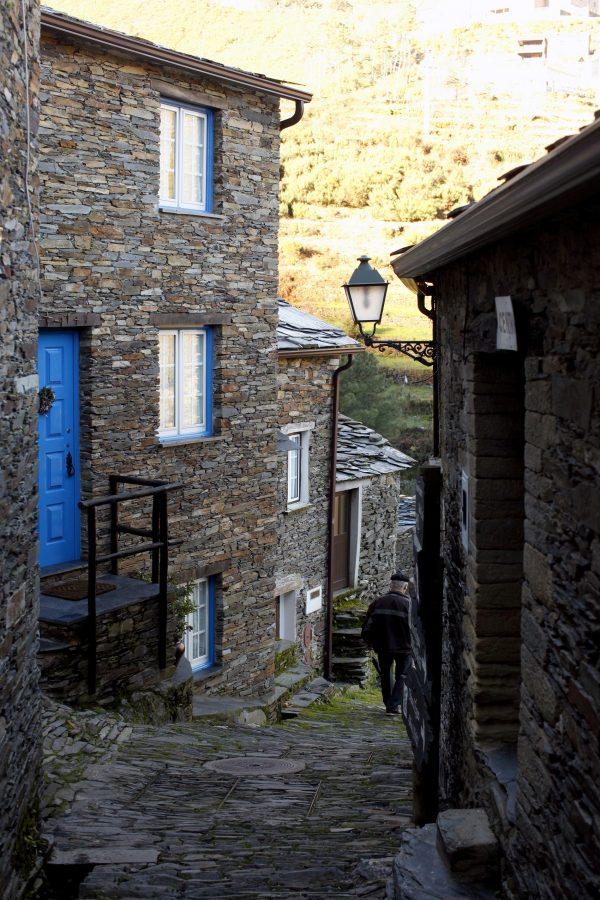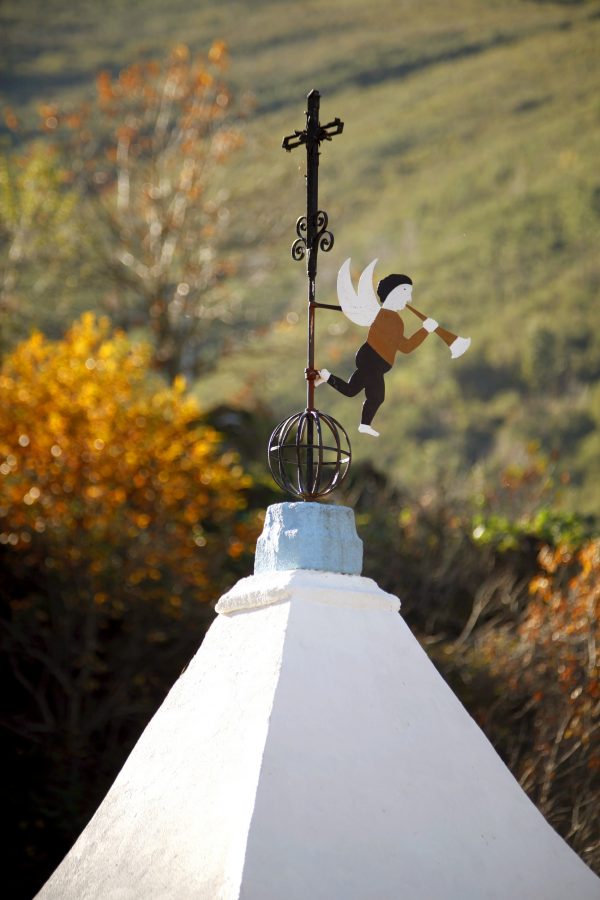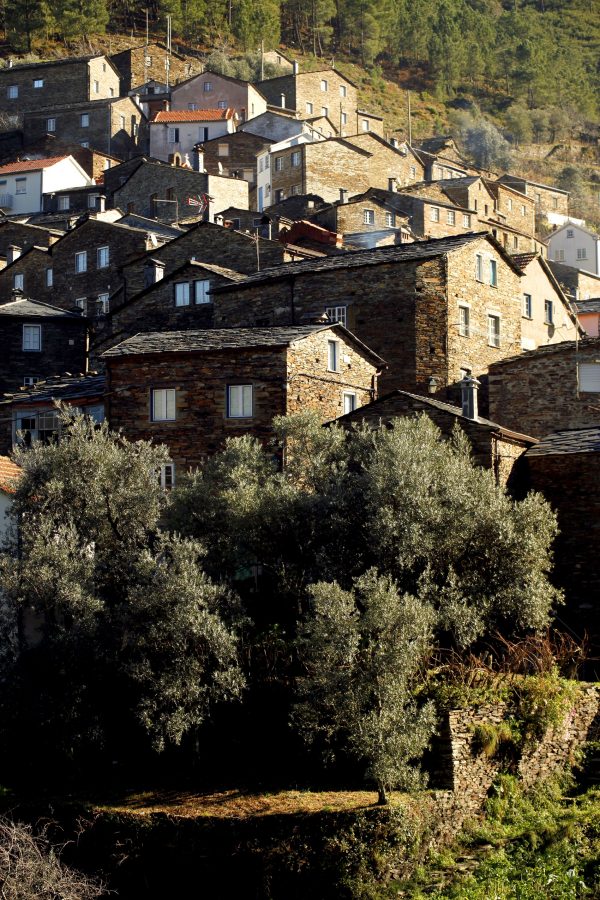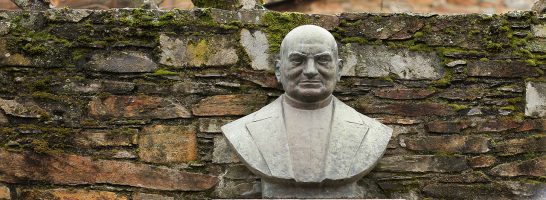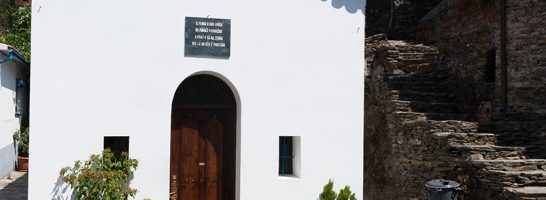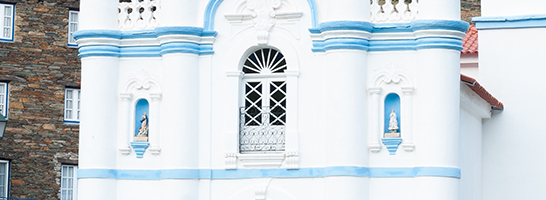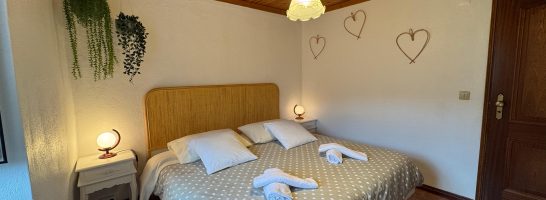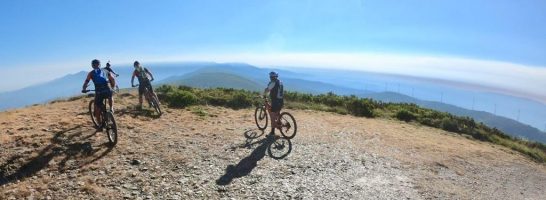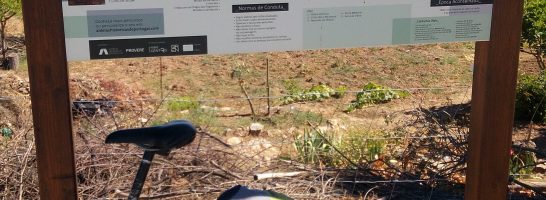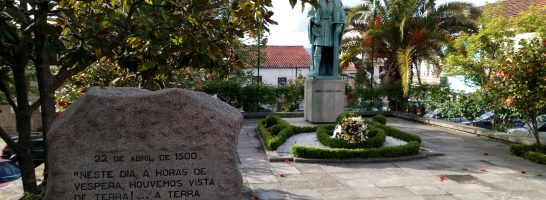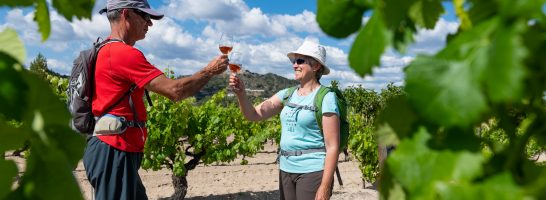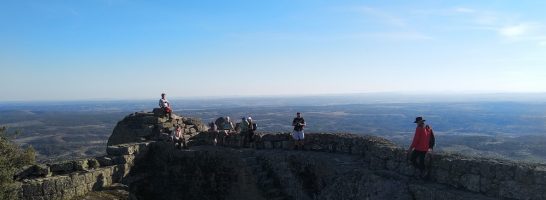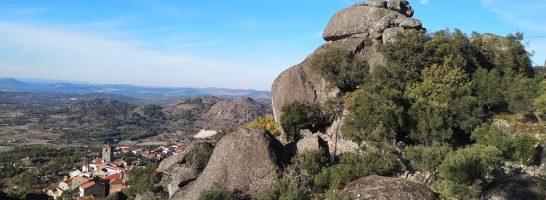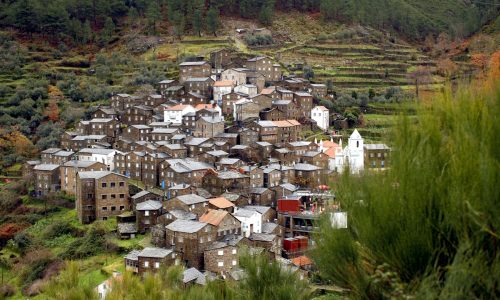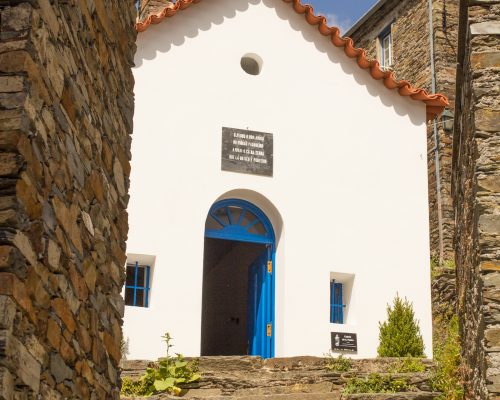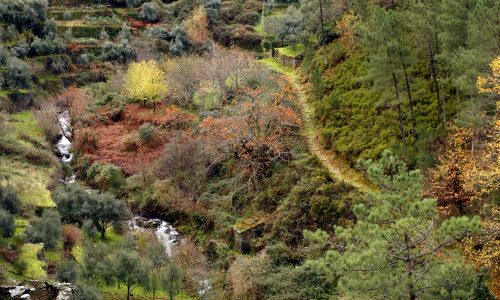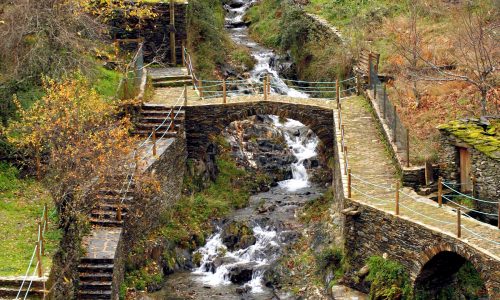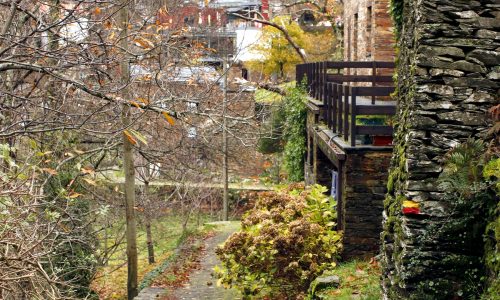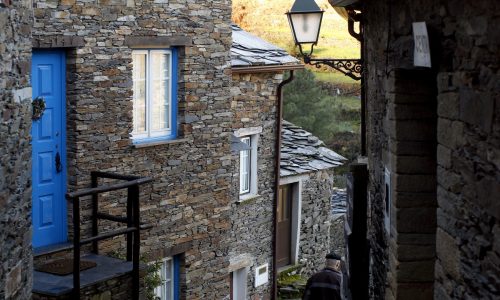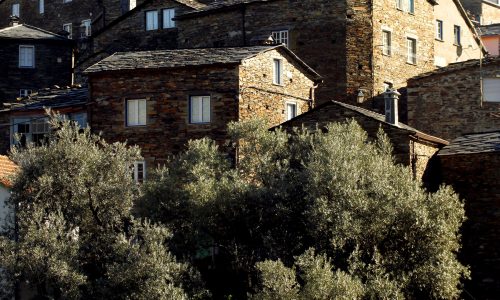Piódão
As we travel through the Serra do Açor, while letting ourselves be enchanted by the majestic and pure landscape, curiosity and impatience invade our senses. Piódão insists on remaining hidden, to then, unexpectedly, dazzle us with its architecture, which so well exemplifies our ability to harmoniously adapt to the most inhospitable, as well as the most sublime of places. As if it were a nativity scene, the houses have been built around the terraces, dotted by blue and black schist, between winding and narrow alleys, which in each corner hide the history of the Historical Village of Piódão.
History
Our history your time
Piódão is a village nestled in the Serra do Açor on the steep escarpment, with a sinuous and mesh-like layout, it is well-adapted to the roughness of the surrounding space. The pastures of Serra de São Pedro do Açor, filled with springs, attracted Portuguese shepherds who fed their flocks there. In medieval times, a small village formed, which was given the name, Casal Piodam, which later moved to its current location, perhaps due to the establishment of a Cistercian Monastery at that time, of which no traces remain; therefore, placing the village’s founding in the 13th century. This monastery may have been linked to the ancient worship of Santa Maria of the Main Parish Church, common in Cistercian Abbeys. Although there is no memory of this ancient church, the current church was amplified in the 18th century, and remodelled in the 19th, through the initiative and based on the project of Canon Manuel Fernandes Nogueira, who designed a façade suited to the eclectic taste of the time, with a Neo-Baroque pediment, with spacing by four slender cylindrical buttresses, crowned by conical spires. Inside, the limestone image of Our Lady of the Immaculate Conception, from the 15th century and perhaps from the first church, with carved altars and adorned with tiles made in Coimbra, is worth a visit. Also worth mentioning is the S. Pedro Chapel with its 16th century image. It is said that one of Inês de Castro's assassins, Diogo Lopes Pacheco, settled here, and his surnames still exist today in Piódão, the Lopes and the Pachecos; the latter had the right to their own gallery in the Church of Lourosa. In the Numeramento Joanino of 1527, the first national population census, Piódão appears as part of the village of Avô, as "casall do piodam" with only two residents. It later became part of the Civil Parish of Aldeia das Dez, from which it became independent in 1676. On 24th October 1855, it became part of the Municipality of Arganil, when the municipality of Avô was extinct. However, with regard to religious jurisdiction, it remains linked to the archpriestship of Avô. At the end of the 19th century, Canon Manuel Fernandes Nogueira founded a School in Piódão, which many call the Seminary, which operated between 1886 and 1906, and which brought together many young people, creating a cultural centre of profound importance for the area. The village of Piódão is characterised by its unique layout in an amphitheatre shape, referred to as a schist nativity scene, with the houses being of great formal, architectural and aesthetic unity. The houses, in schist stone masonry, have roofs made with slabs in the same material. The windows, small in size, have, like the doors, strong colours painted on the frames, and at Easter, crosses made with the blessed laurel branch, are placed on the lintels of the doors to ward off the evil eye. Through its steep, narrow and winding lanes, which form nooks in a mesh-like and largely preserved structure, a trickle of water runs here and there in an irregular channel: the aqueduct. Of note is the simple Algares Fountain. Agricultural and pastoral activities have continued up to this day, as in the past, and are an integral part of the way of life of its inhabitants, seen essentially as a way of subsistence and survival. Also noteworthy are the Eira, where you can enjoy a beautiful panoramic view, and the Bread Oven. The village has been classified as a Place of Public Interest since 1978.
What to see
Where sleep
What to do

Adventure and nature trips
We are a registered tour operating company and we base our activity on the values of legal compliance, nature protection and sustainability. We operate according to the Portuguese legislation and we hold a special accreditation from the Institute of Nature Conservation and Forests allowing us to drive inside Nature Parks and other protected areas (where permitted)- We are members of the Natural.pt brand (www.natural.pt), reserved for companies who adhere to the programme. Following the recent pandemic we got our Clean & Safe seal from the Tourism Authority signifying our compliance with the official health requirements for the prevention and control of infections. Our trips are much more than just going from A to B and we distinguish ourselves for having a higher purpose: the knowledge and promotion of the historical, cultural and environmental heritage of Portugal, so that in the end our guests will have lots of stories to tell. In each new journey through some of the most beautiful and remotest places in mainland Portugal, we discover a unique, authentic and truly surprising country with a sense of adventure and discovery that enriches us as human beings. Our offer is based on a personalised service with tailor-made trips meeting the personal interests of our guests. We are constantly exploring and spending countless days on the ground in contact with the local people and organisations in search for the best places of interest and the best routes. As a result of this research, we have acquired a deep knowledge of the whole country which allows us to give our guests a renewed level of novelty and differentiation in each event. During our events we privilege the contact with nature in a legal and responsible manner, with the aim to reduce the impact of our passage, by working with official entities and other environmental organisations. Every year we plant many autoctonous trees in an effort to make Dream Overland a carbon-neutral company, an action that our customers can support and partake in. With our trips we contribute to the social cohesion and economic sustainability of local communities, through the knowledge and promotion of their traditions, handicrafts, produce and local heritage.

